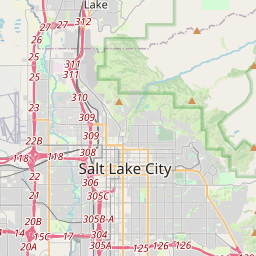Inscription
In 1845, it took six months to get a message from the east coast of the United States to California—by the time it arrived, the news was old. In the late 1850s, a half million people had migration west, and they wanted up-to-date news from home. Something had to be done to deliver mail faster and to improve communication in the expanding nation.
"The Central Overland California and Pikes Peak Express Company," a subsidiary of Russell, Majors, and Waddell, announced the formation of the Pony Express on January 27, 1860. They planned to carry letter mail between St. Joseph, Missouri and Sacramento, California in only ten days. Although the Pony Express was a financially risky enterprise, the company hopes to attract a lucrative contract with the U.S. Postal Service.
Knowing that a healthy horse could run at a full gallop for only 10 to 12 miles, the Pony Express needed stations for its riders to change mounts. They utilized existing stage stations on the eastern end of the route, but needed to build many new stations in remote areas across the Great Basin. Alexander Majors said that 400 to 500 mustang horses were purchased, 200 men were hired to manage the stations, and 80 riders signed on to begin the run of the Pony Express.
Although the Pony Express captured the admiration, imagination, and hearts of people, it was a financial disaster for its founders. The Pony era, however, was not brought to end by its financial failure, weather, or even problems with Indians—but the completion of the Transcontinental Telegraph on October 26, 1861.
"The Central Overland California and Pikes Peak Express Company," a subsidiary of Russell, Majors, and Waddell, announced the formation of the Pony Express on January 27, 1860. They planned to carry letter mail between St. Joseph, Missouri and Sacramento, California in only ten days. Although the Pony Express was a financially risky enterprise, the company hopes to attract a lucrative contract with the U.S. Postal Service.
Knowing that a healthy horse could run at a full gallop for only 10 to 12 miles, the Pony Express needed stations for its riders to change mounts. They utilized existing stage stations on the eastern end of the route, but needed to build many new stations in remote areas across the Great Basin. Alexander Majors said that 400 to 500 mustang horses were purchased, 200 men were hired to manage the stations, and 80 riders signed on to begin the run of the Pony Express.
Although the Pony Express captured the admiration, imagination, and hearts of people, it was a financial disaster for its founders. The Pony era, however, was not brought to end by its financial failure, weather, or even problems with Indians—but the completion of the Transcontinental Telegraph on October 26, 1861.
Details
| HM Number | HM9H |
|---|---|
| Series | This marker is part of the Pony Express National Historic Trail series |
| Tags | |
| Marker Condition | No reports yet |
| Date Added | Sunday, September 7th, 2014 at 1:51am PDT -07:00 |
Pictures
Locationbig map






| UTM (WGS84 Datum) | 12T E 431103 N 4511564 |
|---|---|
| Decimal Degrees | 40.75215000, -111.81615000 |
| Degrees and Decimal Minutes | N 40° 45.129', W 111° 48.969' |
| Degrees, Minutes and Seconds | 40° 45' 7.74" N, 111° 48' 58.14" W |
| Driving Directions | Google Maps |
| Area Code(s) | 801 |
| Closest Postal Address | At or near 2423-2537 E Sunnyside Ave, Salt Lake City UT 84108, US |
| Alternative Maps | Google Maps, MapQuest, Bing Maps, Yahoo Maps, MSR Maps, OpenCycleMap, MyTopo Maps, OpenStreetMap |
Is this marker missing? Are the coordinates wrong? Do you have additional information that you would like to share with us? If so, check in.
Nearby Markersshow on map
Show me all markers in: Salt Lake City, UT | Salt Lake County | 84108 | Utah | United States of America
Maintenance Issues
- What historical period does the marker represent?
- What historical place does the marker represent?
- What type of marker is it?
- What class is the marker?
- What style is the marker?
- Does the marker have a number?
- What year was the marker erected?
- Who or what organization placed the marker?
- This marker needs at least one picture.
- Can this marker be seen from the road?
- Is the marker in the median?

Comments 0 comments